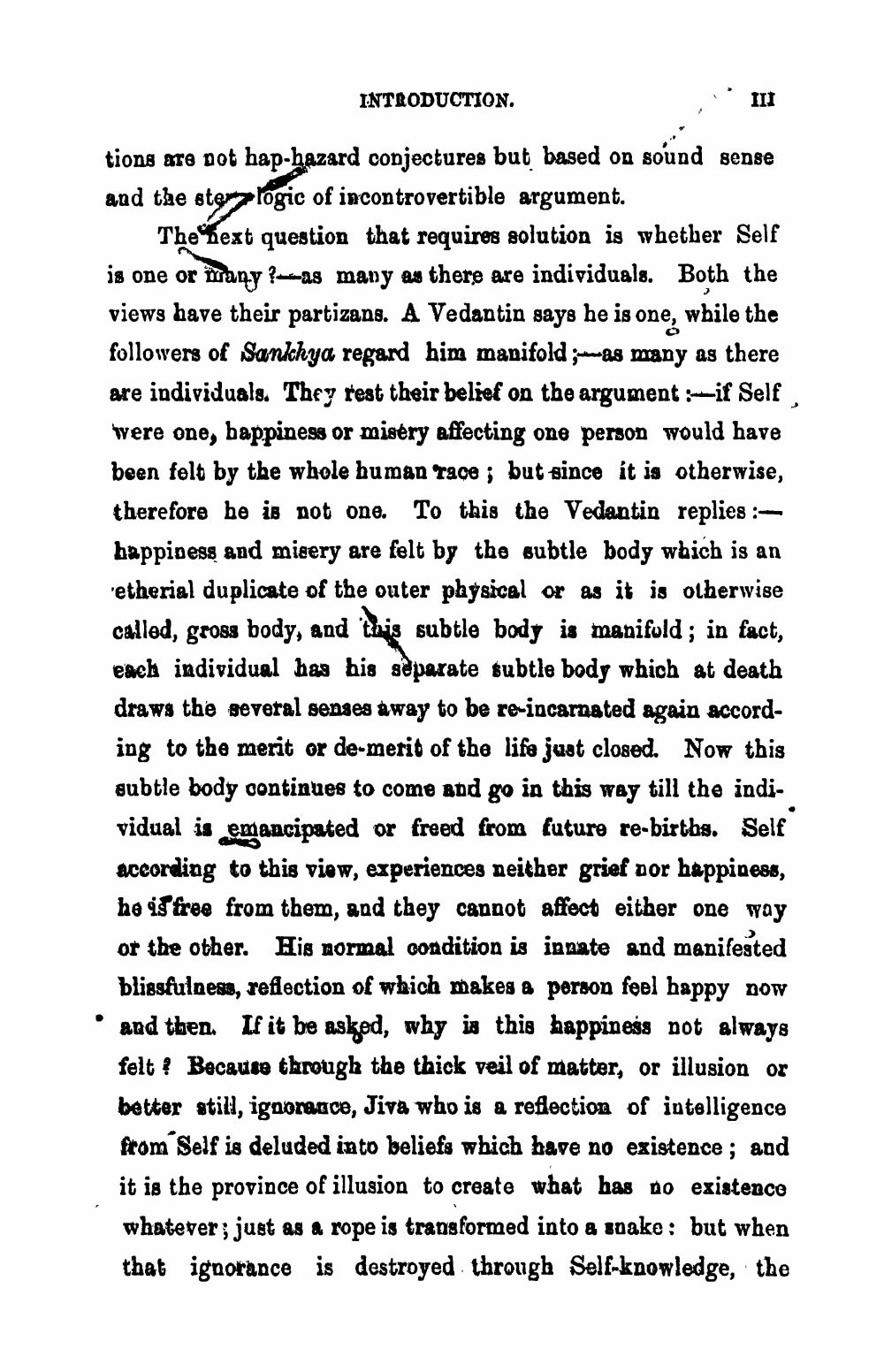Book Title: Vicharmala Granth Satik Pustak 1 to 8 Author(s): Anathdas Sadhu, Govinddas Sadhu Publisher: Heeralal Dhole View full book textPage 8
________________ INTRODUCTION. , III tions are not hap-hazard conjectures but based on sound sense and the sterlogic of incontrovertible argument. The next question that requires solution is whether Self is one or many as many as there are individuals. Both the views have their partizans. A Vedantin says he is one, while the followers of Sankhya regard him manifold ;--as many as there are individuals. They rest their belief on the argument :-if Self were one, bappiness or misery affecting one person would have been felt by the whole human race ; but since it is otherwise, therefore he is not one. To this the Vedantin replies : happiness and misery are felt by the subtle body which is an 'etherial duplicate of the outer physical or as it is otherwise called, gross body, and this subtle body is manifold; in fact, each individual has his separate subtle body which at death draws the several senses away to be re-incarnated again according to the merit or de-merit of the life just closed. Now this subtle body continues to come and go in this way till the individual is emancipated or freed from future re-births. Self according to this view, experiences neither grief oor happiness, he is free from them, and they cannot affect either one way or the other. His normal condition is innate and manifested blissfulness, reflection of which makes a person feel happy now and then. If it be asked, why is this happiness not always felt ? Because through the thick veil of matter, or illusion or better stil, ignorance, Jiva who is a reflection of intelligence from Self is deluded into beliefs which have no existence; and it is the province of illusion to create what has no existence whatever ; just as a rope is transformed into a snake: but when that ignorance is destroyed through Self-knowledge, thePage Navigation
1 ... 6 7 8 9 10 11 12 13 14 15 16 17 18 19 20 21 22 23 24 25 26 27 28 29 30 31 32 33 34 35 36 37 38 39 40 41 42 43 44 45 46 47 48 49 50 51 52 53 54 55 56 57 58 59 60 61 62 63 64 65 66 67 68 69 70 71 72 73 74 75 76 77 78 79 80 81 82 ... 140
